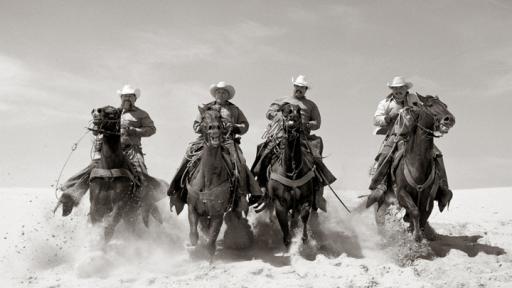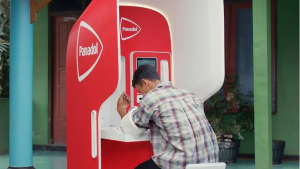Decked out in a Stetson hat and cowboy boots, DJ Stout takes inspiration from one of his heroes, American folklorist and writer J. Frank Dobie, who believed in the power of regionalism and was quoted as saying "great literature transcends its native land but none that I know of ignores its soil". The graphic designer, a partner at Pentagram, weaves an immersive presentation of visuals and sound that conjure up his homestate, Texas, and its influence on his work.
On stage with Stout at Design Indaba Conference 2014 is fellow Austenite, composer and musician Graham Reynolds, who wrote an accompanying piano score evoking the cattle drive, galloping horses, big sky and expansive landscape of the place.
Stout's presentation opens with scenes of a vicious wild fire that ripped through the Big Ben, a remote region in the far west of Texas where he was born. The fire devastated prime rangeland and killed livestock including hundreds of horses.
“The cowboys who live in this area depend on the land for their livelihood, on each other's cowhands and on their horses. So this was particularly devastating for this area," he explains.
Shortly after the blaze, Stout designed an issue of Pentagram Paper dedicated to cowboy poets (the publication is a little book of inspirational visuals that the agency sends out to clients).
It is quite strange to discover that there is a thing such as cowboy poetry because they [cowboys] generally go out of their way to talk very little, he says.
The book features beautiful portraits by photographer Jay B Sauceda of real-life cowboy poets alongside their poems. “It is hokey. It is corny. It is kind of like what you think it is, but I really love it and a lot of other people loved it because there is something about it that is very honest and down to earth. It is about the things that cowboys love. They love the land, they love their fellow cowboys and family, and they love horses.”
Celebrating the quirky characters, regionalisms and even cultural clichés of Texas through his work, says Stout, results in an authentic visual language that resonates more broadly.
A sense of place – being from somewhere – is so important to us as graphic designers and what we do, he enthuses.
He himself is the son of several generations of cowboys: “My grandpa was a Texas storyteller. I would sit on his lap and he would tell me Texas tell-tales, some of which would be true. He used to read me The Book of Cowboys. This book has inspired me throughout my career... and I have designed over a hundred books. The book has these big beautiful full-colour illustrations that I would look at for hours. It also had these wonderful little drawings in the margins that have found their way into my work,” he says.
He shares the story of his father, who was a cowboy of a different kind – a member of the Alpine Cowboys semi-pro baseball team.
In 1946, a legendary ranger named Herbert Kokernot, who had a real love for the game, built a baseball stadium on his range in Alpine. Not only did he employ the members of the team as cowboys in the off-season but he also paid for them to go the local university.
Stout’s father, who went on to complete his master’s degree, was one such beneficiary. He captured this personal story and that of Kokernot and the Alpine Cowboys in a book that he designed and wrote. The process brought him and his father closer and for the first time his father understood what book designers do.
Before joining Pentagram, Stout worked as the art director of Texas Monthly for 13 years, during which time he produced many iconic covers and issues that where strongly influenced by the visual themes and language of the place.
This continued in his work at Pentagram with themes like cowboys, Texan pride, the geography and landscape cropping up again and again in book and graphic projects.
“I do think that my Texan roots has affected almost all my work,” he concludes.









